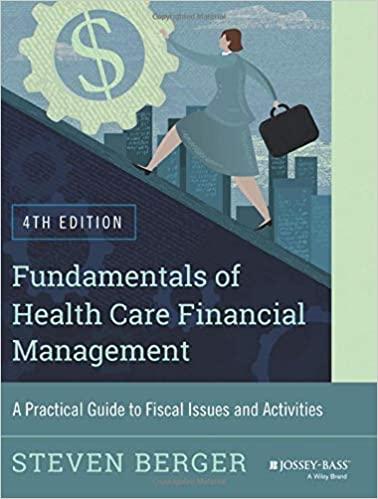Question
Ineed to do a retirement future savings. Please help me to answer the questions 5,6,7, (Show all work here.) on 7 9,11,12,13, *******answer the blanks
Ineed to do a retirement future savings.
Please help me to answer the questions
5,6,7,(Show all work here.) on 7
9,11,12,13, *******answer the blanks I need to put this on excel I will my self
1.YOUR ESTIMATE/BEST GUESS: I intend to withdraw $5,000 at the END of each year from my retirement account to support my lifestyle. Input how much you think you need to live comfortably in your retirement years. To help you with your estimate, experts estimate you should plan to have approximately 70% of your ending salary in your retirement years in order to maintain your standard of living. (Assume no pension or Social Security benefits.)
2. When I retire, my goal is to have saved $______ in a retirement account. I believe these funds will be sufficient to maintain my desired lifestyle through my retirement years. Input this figure BEFORE you calculate anything on the Excel template. Just take a guess. What do you think is a reasonable amount to have as your nest egg on the day you retire (age 65 in this example) that would support the annuity withdrawal from the previous question?
3. Based on my total retirement savings from question #5, assuming those funds are invested at 5% compounded annually, I am able to withdraw $_ from my retirement fund each year over the next 13 years. (Show all work here.) Easiest to compute with the financial calculator (solve for PMT). post the formula or step you used
4. In order to meet your retirement goals (withdrawing an annuity stream for 20 years) from question #4, how much would you need to have in your retirement account at age 65? In other words, based on the amount of the annuity from question #4, the total retirement savings account must have an actual balance of $______________ in the account on the day of retirement at age 65 assuming a rate of 5% compounded annually. This is a present value of annuity calculation. (Show all work here.)
5. Review your answers from questions #4-#7. This is just the off the cuff approach to retirement planning. How close were you to reality? What are your thoughts or conclusions?
Now lets take a more analytical approach to retirement planning:
INPUT INTO TEMPLATE:
I hope to have $___________________ of retirement savings in the bank by age 52.
I hope to earn $___________________ per year when Im 52.
I hope to earn $___________________ per year when Im 62.
I hope to earn $___________________ per year when Im 72.
I hope to earn $___________________ per year when Im 82.
I PROMISE that I WILL SAVE 15% of that salary each year, and I expect to retire at age 65.
If my life expectancy is age 85, my retirement years will total ________.
SHOW WORK IN THE TEMPLATE: Assume I invest 15% of my salary annually based upon the above salaries at a savings rate of 6.5% compounded annually. At retirement age, my nest egg (including the retirement funds I had saved by age 30) would total:
$_______________________ (from Excel template)
SHOW WORK IN THE TEMPLATE: Based on the amount on funds in your retirement account (question #12), how much can you withdraw each year during retirement? In other words, what is your annual annuity?
$_______________________ (from Excel template)
With a disciplined savings plan, I know I can meet my long-term financial goals: TRUE/FALSE
Please comment on this exercise. What are your thoughts/conclusions?
Step by Step Solution
There are 3 Steps involved in it
Step: 1

Get Instant Access to Expert-Tailored Solutions
See step-by-step solutions with expert insights and AI powered tools for academic success
Step: 2

Step: 3

Ace Your Homework with AI
Get the answers you need in no time with our AI-driven, step-by-step assistance
Get Started


